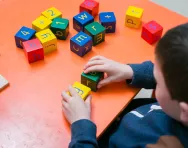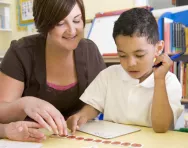Important update from TheSchoolRun
For the past 13 years, TheSchoolRun has been run by a small team of mums working from home, dedicated to providing quality educational resources to primary school parents. Unfortunately, rising supplier costs and falling revenue have made it impossible for us to continue operating, and we’ve had to make the difficult decision to close. The good news: We’ve arranged for another educational provider to take over many of our resources. These will be hosted on a new portal, where the content will be updated and expanded to support your child’s learning.
What this means for subscribers:
- Your subscription is still active, and for now, you can keep using the website as normal — just log in with your usual details to access all our articles and resources*.
- In a few months, all resources will move to the new portal. You’ll continue to have access there until your subscription ends. We’ll send you full details nearer the time.
- As a thank you for your support, we’ll also be sending you 16 primary school eBooks (worth £108.84) to download and keep.
A few changes to be aware of:
- The Learning Journey weekly email has ended, but your child’s plan will still be updated on your dashboard each Monday. Just log in to see the recommended worksheets.
- The 11+ weekly emails have now ended. We sent you all the remaining emails in the series at the end of March — please check your inbox (and spam folder) if you haven’t seen them. You can also follow the full programme here: 11+ Learning Journey.
If you have any questions, please contact us at [email protected]. Thank you for being part of our journey it’s been a privilege to support your family’s learning.
*If you need to reset your password, it will still work as usual. Please check your spam folder if the reset email doesn’t appear in your inbox.
Does your child have special educational needs?

A child is considered to have a special educational need if they have a learning difference that calls for special educational provision to be made for them. In January 2024, 1.6m pupils in England identified as having special educational needs and disabilities (SEND).


Start a unique learning programme!
- Weekly programme for each school year
- Worksheets sent direct to your inbox
- Keeps your child's learning on track
Parents, teachers and childcare practitioners usually find out if a child has a need if they have greater difficulty learning than the majority of other children of the same age, or if the child has a disability that prevents or hinders them from making use of educational facilities provided.
Types of special educational needs and disabilities
The term special educational needs and disabilities (SEND) refers to a wide spectrum of different needs. These needs can be broken down into more specific areas.
Social, emotional and behavioural disorders
Attention Deficit Disorder (ADD) and Attention Deficit Hyperactivity Disorder (ADHD)
Children with these conditions find it difficult to concentrate and are easily distracted. This often leads to problems with learning and behaviour. The hyperactivity element might be noticed in excessive talking and movement or impulsive actions.
Autism
This is a non-progressive developmental disorder that usually appears before the age of three. Signs of autism are difficulties with social interaction, communication, imagination and behaviour. It is known as a spectrum disorder because symptoms can vary from mild to severe.
Learning difficulties
Dyslexia
This affects the ability to read, write and spell. About 10 per cent of the UK population is estimated to have some form of dyslexia and it varies from mild to extreme.
Dyscalculia
Like dyslexia, this is a specific disability that affects a person's ability to deal with numbers. It relates to numerical aspects of life, such as telling the time, dealing with money and measuring things.
Acalculia
This is different from dyscalculia in that it describes the inability to perform basic mathematical processes of addition, subtraction, multiplication and division.
Developmental Coordination Disorder (DCD) / Otherwise known as Dyspraxia
This is a motor learning disability characterised by a lack of coordination which affects the ability to deal with everyday tasks. Children with dyspraxia have no neurological abnormality to explain its cause.
Speech, Language and Communication Disability
Children who have problems expressing themselves and understanding others may find it difficult to build relationships and learn.
Down’s Syndrome
Affecting one in every 1,000 people, Down’s Syndrome is a chromosomal disorder and one of the most common causes of learning difficulties.
Sensory impairment
Hearing impairment
This refers to a range of hearing loss from mild to totally deaf and can refer to children born with hearing loss or those who develop it later in life.
Visual impairment
This covers people who are partially sighted or blind. Severe or total loss of vision can occur when parts of the eye or brain that process images become damaged through disease or trauma.
Support for SEND pupils
Children who have been assessed by local authorities as needing the most support have an Education, health and care plan (EHC plan), which sets out a child’s legally enforceable entitlements to specific packages of support.
In January 2019, 20.6% of pupils with SEND had an EHC plan. Almost half (47.9%) of children with an EHC plan attended mainstream schools and almost all others attended a special school.








